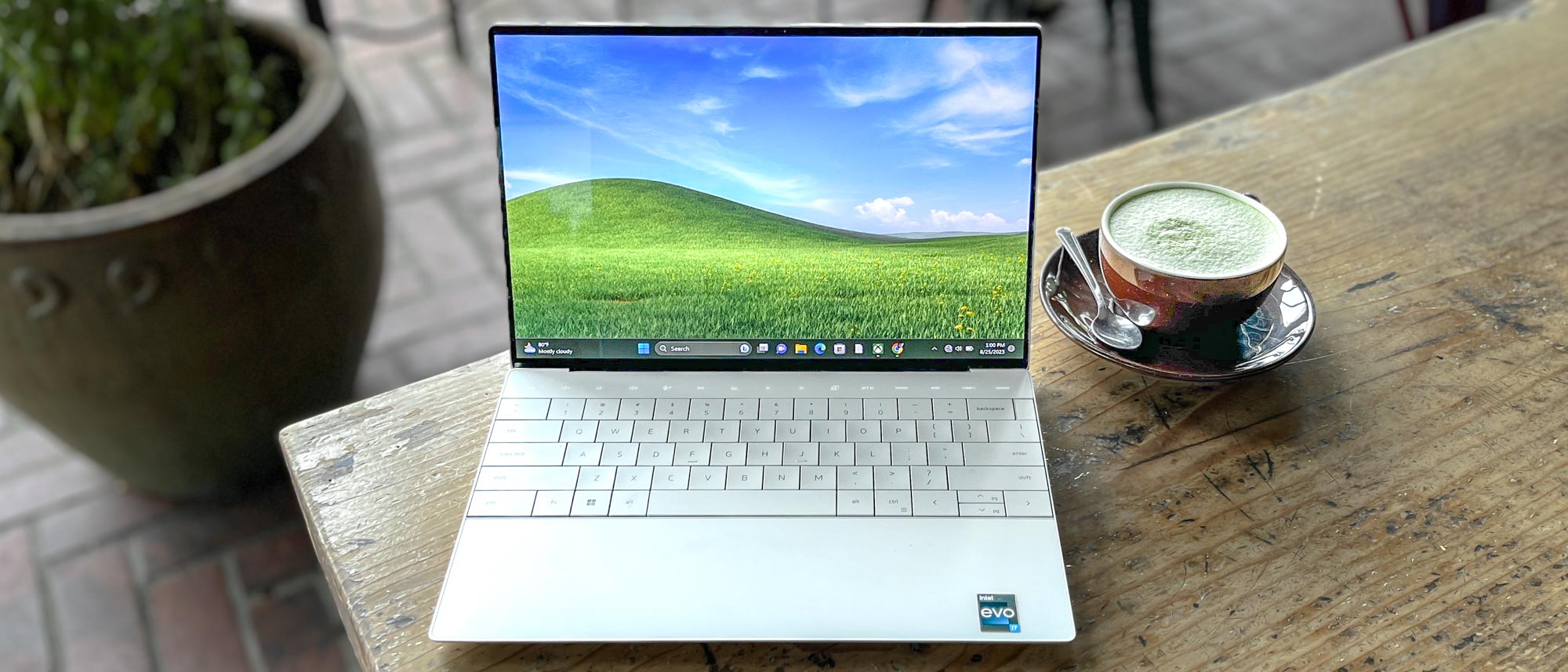Tom's Guide Verdict
The thin and light Dell XPS 13 Plus (2023) looks and feels like a premium laptop, but its elegant design and gorgeous 3.5K OLED display are undercut by a frustrating keyboard, underwhelming performance and bad battery life.
Pros
- +
Beautiful OLED display
- +
Elegant design
Cons
- -
Frustrating capacitive touch row
- -
Disappointing performance
- -
Bad battery life
- -
Middling 720p webcam
Why you can trust Tom's Guide
The Dell XPS 13 Plus (2023) ($1,249 to start) offers the power of the latest Intel Raptor Lake 13th Gen CPUs in the lightest, slimmest Dell laptop to date.
This elegant OLED-equipped ultraportable turned heads when it debuted in 2022, but when we had the chance to get one in for testing and perform a full Dell XPS 13 Plus review we were disappointed by its relatively short battery life and unsatisfying capacitive touch function keys.
Now the XPS 13 Plus has been refreshed with the latest laptop chips from Intel, and after couple of weeks with it I can tell you it's still a sleek productivity machine that looks sharp on a desk.
However, I'm more disappointed than ever with how well it performs — and I'll show you why in this review.
Dell XPS 13 Plus (2023) review: Specs
| Row 0 - Cell 0 | Dell XPS 13 Plus 2023 (starting) | Dell XPS 13 Plus 2023 (as tested) |
| Price | $1,249 | $1,449 |
| CPU | 13th gen Core i7-1360P | 13th gen Core i7-1360P |
| RAM | 16GB | 16GB |
| SSD | 512GB | 512GB |
| Display | 13.4 inches (1920 x 1200) touchscreen | 13.4 inches (3456 x 2160) OLED touchscreen |
| Webcam | 720p / 30fps | 720p / 30fps |
| Ports | 2x Thunderbolt 4 | 2x Thunderbolt 4 |
| Size | 11.63 x 7.84 x 0.6 inches | 11.63 x 7.84 x 0.6 inches |
| Weight | 2.71 pounds | 2.77 pounds |
Dell XPS 13 Plus (2023) review: Price and availability
- Expect to pay between $1,249 - $1,800
- $200 OLED upgrade is worth the splurge
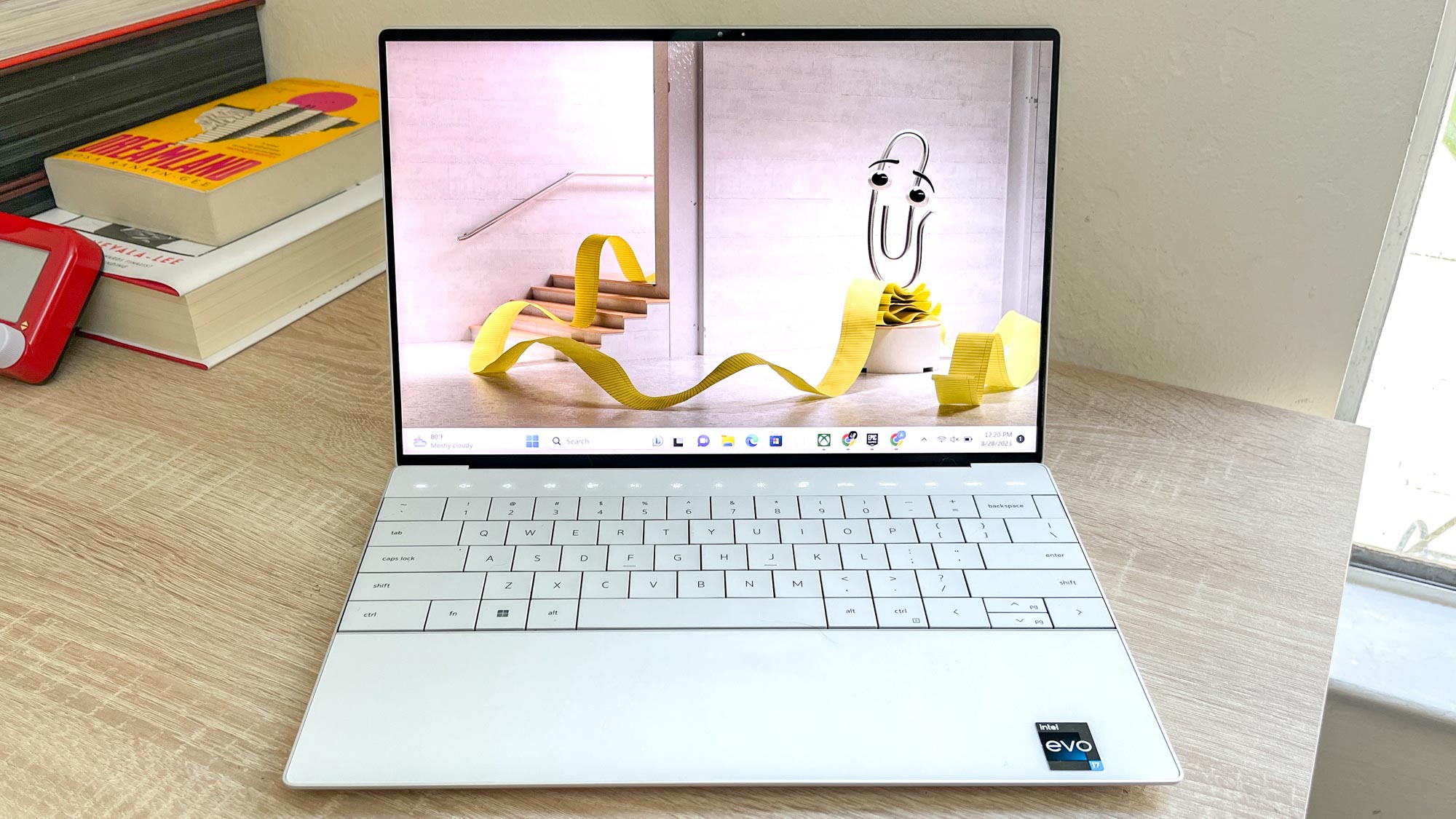
The Dell XPS 13 Plus (2023) is available for purchase right now via Dell's website and select retailers for a starting price of $1,249. For that you get the laptop packing a 13th gen Intel Core i7-1360P CPU, 16GB of RAM, a 512GB SSD for storage and the standard 13.4-inch (1920 x 1200) touchscreen.
The laptop arrives running Windows 11, and comes with a pair of adapters in the box to connect USB-A or 3.5mm accessories to its two USB-C ports.
You can't upgrade the processor at this time, but you can pay more to upgrade the RAM (up to 32GB), the storage (up to 2TB) and the screen, which can be upgraded to a 4K touchscreen or a 3.5K OLED touchscreen. Upgrading the display costs $200 by itself, and the rest of the ugprades come at similar prices or cheaper.
Get instant access to breaking news, the hottest reviews, great deals and helpful tips.
A fully tricked-out Dell XPS 13 Plus (2023) would cost about $1,749, and for that you'd get one with the same CPU, 32GB of RAM, a 2TB SSD for storage and the 3.5K OLED display. You could also upgrade to Windows 11 Pro for a $50 charge, bringing the total for such a laptop to $1,799.
That's a bit pricer than the XPS 13 Plus (2023) Dell sent us for review, which came with the standard internals (13th gen Core i7 CPU, 16GB RAM, 512GB SSD) and the 3.5K OLED touchscreen.
So if you wanted to buy the exact same unit we review here, it would cost you roughly $1,449.
Dell XPS 13 Plus (2023) review: Design
- Slim aluminum chassis looks and feels premium
- Nearly as light and thin as a MacBook Air
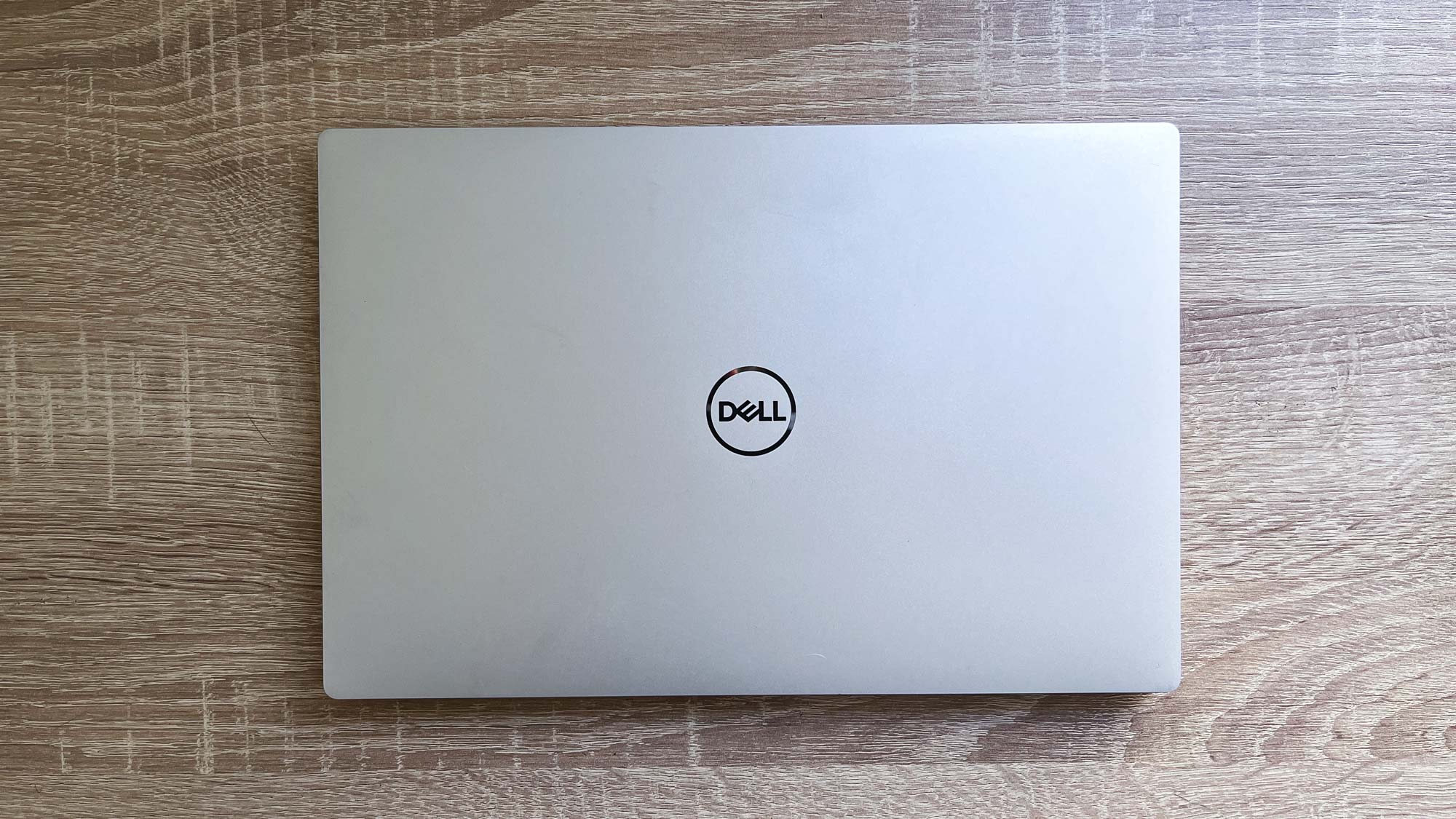
The Dell XPS 13 Plus looks and feels like a fancy, premium laptop. It's remarkably easy to carry, and since it measures 11.63 x 7.84 x 0.6 inches and weighs between 2.7-2.9 pounds (depending on config) it's nearly as thin and light as a MacBook Air M2 (0.4 inches thin, 2.7 pounds heavy).
The lack of any meaningful lip around the edge makes it hard to open this laptop without two free hands and a bit of gumption.
The machined aluminum chassis feels sturdy, and I couldn't bend or flex it no matter how hard I tried. The lack of any meaningful lip around the edge makes it hard to open this laptop without two free hands and a bit of gumption.
Open it up and you'll see the display ensconced in Dell's trademark InfinityEdge design, with thin bezels surrounding the display on all sides. You'll also find a row of capacitive touch buttons lit up above the keyboard where the function row normally resides, while below it is an unmarked trackpad that's effectively invisible.
Dell XPS 13 Plus (2023) review: Display
- 3.5K OLED display looks great and supports HDR
- Brighter than last year's model, with good color accuracy
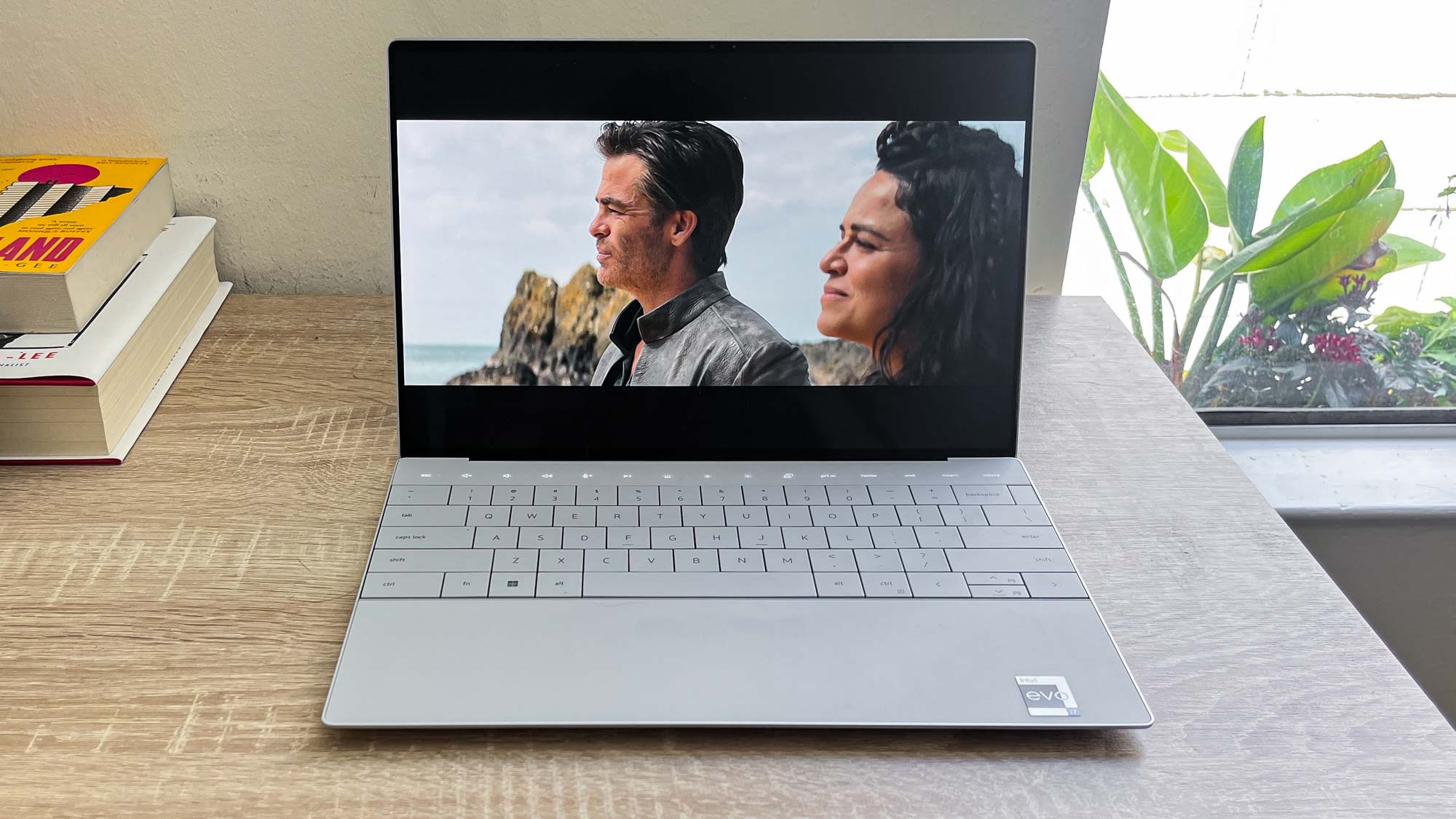
The 13.4-inch 3.5K OLED display on our Dell XPS 13 Plus (2023) review unit is one of my favorite things about it.
I think the OLED panel makes colors appear slightly deeper and richer than on an LCD display, at least to my humble eyes, and the sharp contrast between lights and darks helps everything you do on this laptop stand out. It also supports HDR (high dynamic range), still a rarity on laptop displays, so you can enjoy HDR content in movies and games.
HDR support is great because HDR content typically offers better and more realistic image quality, as you can make out finer gradations between light and shadow than on an SDR (standard dynamic range) display. Factor in the deep, inky blacks and vibrant colors of the OLED screen and you can start to appreciate why I like this display so much. I really enjoy seeing details like the shifting shades of sunlight reflecting off Chris Pine's face in Dungeons & Dragons: Honor Among Thieves, and I think you miss out on little details like that when watching on most laptops.
Our display testing backs up my anecdotal experience, and reveals that this year's Dell XPS 13 Plus is slightly brighter than last year's model. When we pointed our Klein-10A colorimeter at it we found the XPS 13 Plus (2023) display has an average maximum brightness of 373.6 nits, getting as high as 381 nits in the lower-right corner.
That's nearly the 400 nits Dell promises, and it's slightly better than the display on last year's model, which had an average max brightness of 366 nits that topped out at 375 nits in the same lower-right corner. It's also better slightly brighter than competing 13-inchers like the Asus Zenbook S 13 OLED, though as you can see from the chart below neither can match the brilliance of Apple's MacBook Air M2.
| Row 0 - Cell 0 | Dell XPS 13 Plus (2023) | Asus Zenbook S 13 OLED | MacBook Air M2 |
| Nits (brightness) | 373.6 | 369.8 | 473.6 |
| sRGB | 113.7% | 106.1% | 107% |
| DCI-P3 | 80.5% | 75.2% | 75.9% |
| Delta-E | 0.2 | 0.2 | 0.22 |
In terms of color reproduction, our XPS 13 Plus (2023) review unit manages to achieve 113.7% of the sRGB color gamut and 80.5% of the more demanding DCI-P3 color gamut (100% is most accurate, higher often means more vivid, saturated colors) with a Delta-E value of 0.2 (the closer to 0, the better). You typically don't need to care about these numbers unless you're planning to do a lot of color-accurate editing work on photos, movies or the like, but they help us understand a laptop screen's capabilities and compare it against competing machines.
In this case, our XPS 13 Plus (2023) review unit proves itself impressively bright competent enough at color reproduction to satisfy all but the most discerning eyes.
Dell XPS 13 Plus (2023) review: Ports
- 2x Thunderbolt 4 ports is all you get, for charging and accessories
- Included USB-A and 3.5mm dongles help, but more ports would be better
The Dell XPS 13 Plus has always been short on ports, and the 2023 model is no exception. Hope you like Thunderbolt, because that's what you get.
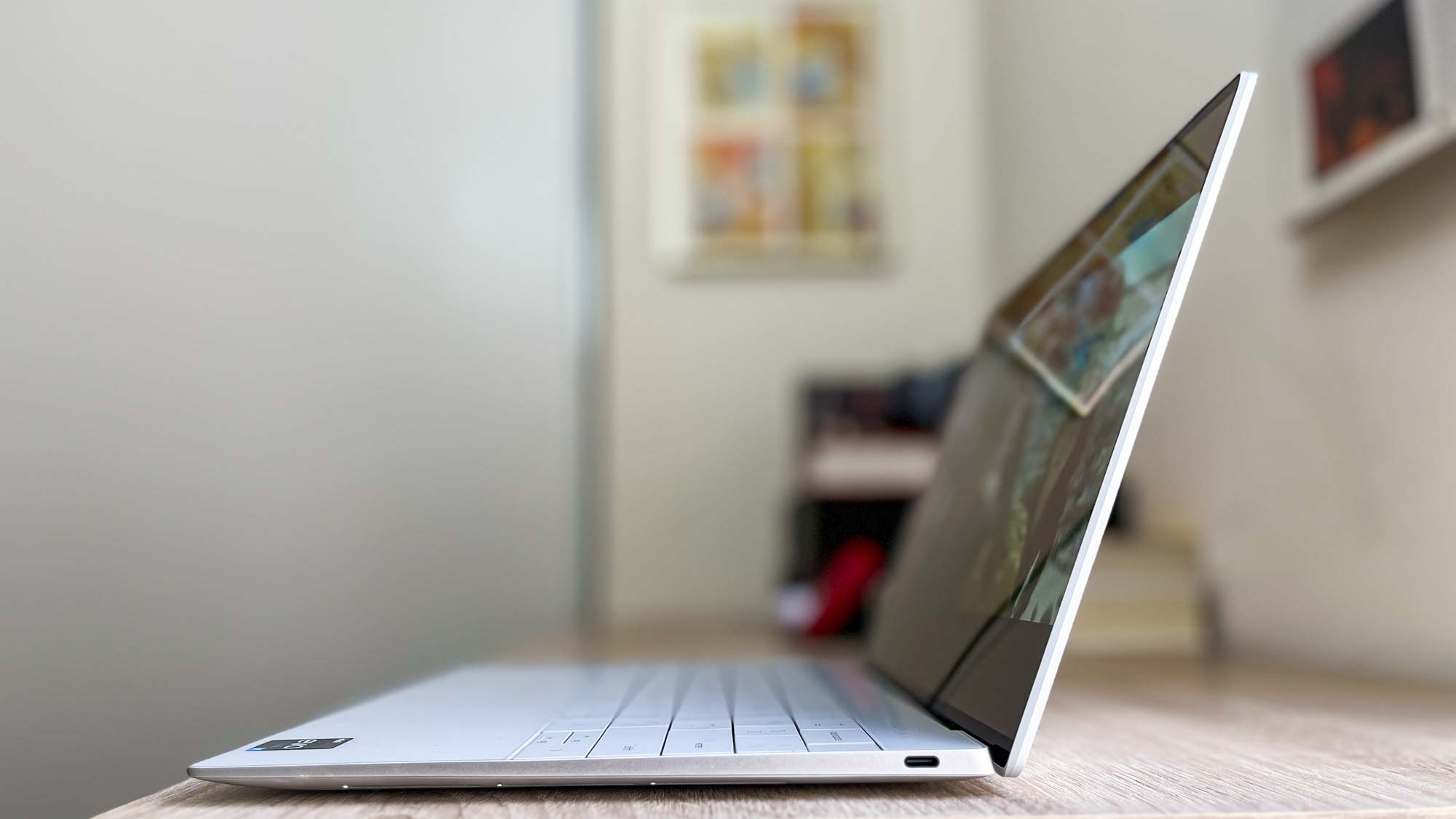
This laptop sports just two Thunderbolt 4/USB-C ports, one on either side of the laptop near the hinge. You can use either to output to a display or charge the laptop, but plugging in to do either halves your available ports. If you, like me, sometimes like to plug a mouse and keyboard to work more comfortably on a laptop, you're going to have to invest in a USB hub.
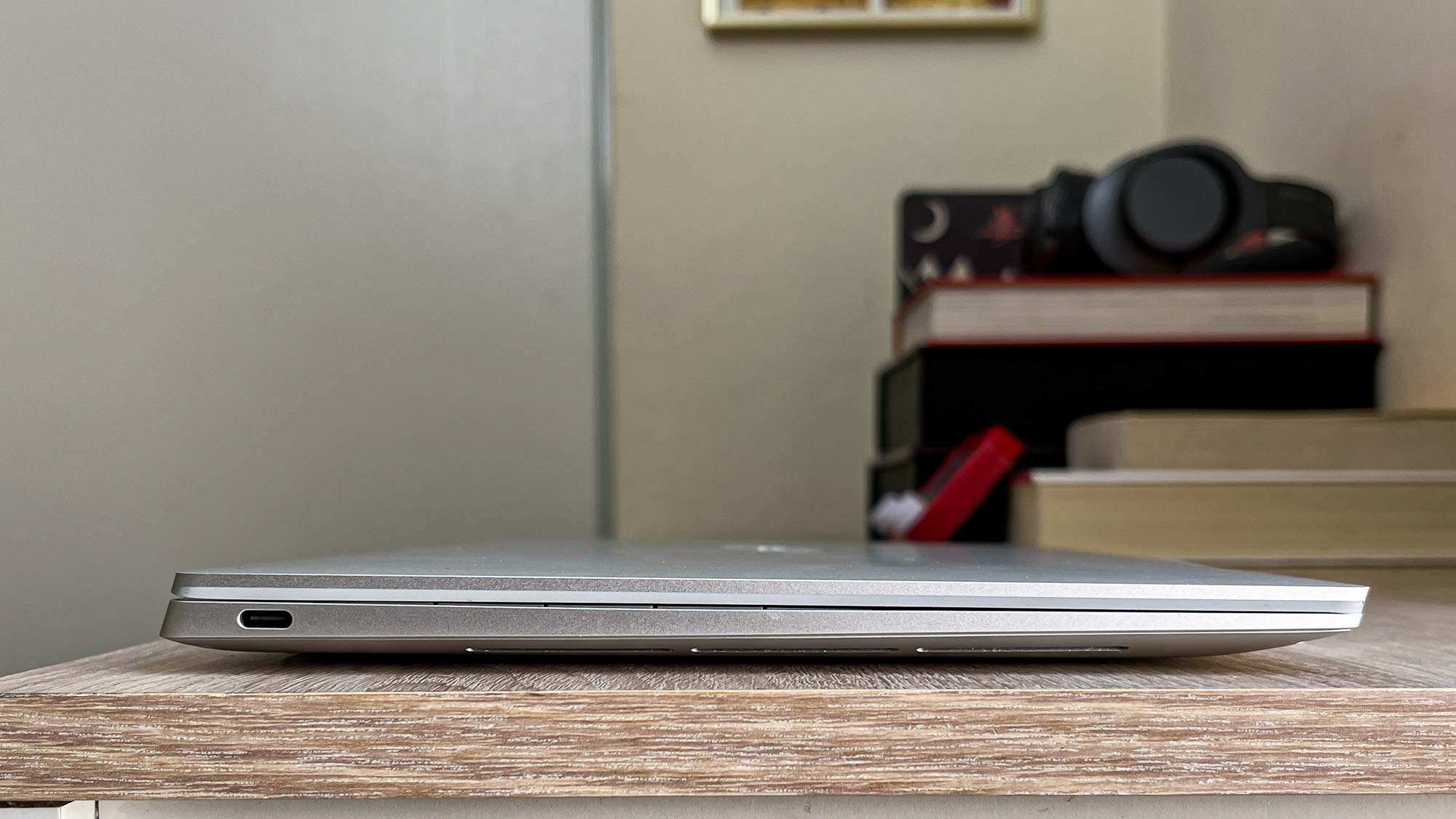
Dell also includes a USB-C to USB-A adapter and a USB-C to 3.5mm adapter so you can plug a USB-A device or a pair of headphones into the XPS 13 Plus. That helps dull the pain of trying to use your favorite accessories with this laptop, but not enough to make up for this shortcoming.
Dell XPS 13 Plus (2023) review: Performance
- Speedy enough for work, but don't expect great gaming performance
- Disappointing CPU performance, but fast SSD and 16GB of RAM help
The fact that the Dell XPS 13 Plus (2023) comes with 16GB of RAM and a 13th Gen Core i7 Intel CPU standard means you can count on speedy performance at work and on the web.
In my time using this laptop for work, play and to write this review I never felt constrained by its speed or multitasking capabilities. I was able to have multiple apps running simultaneously while flipping back and forth between 10+ tabs in Chrome and a Spotify playlist with no noticeable performance issues, so you should have no trouble getting basic work done.
But when we put it through our gauntlet of performance tests, the weaknesses of the Dell XPS 13 Plus became clear.
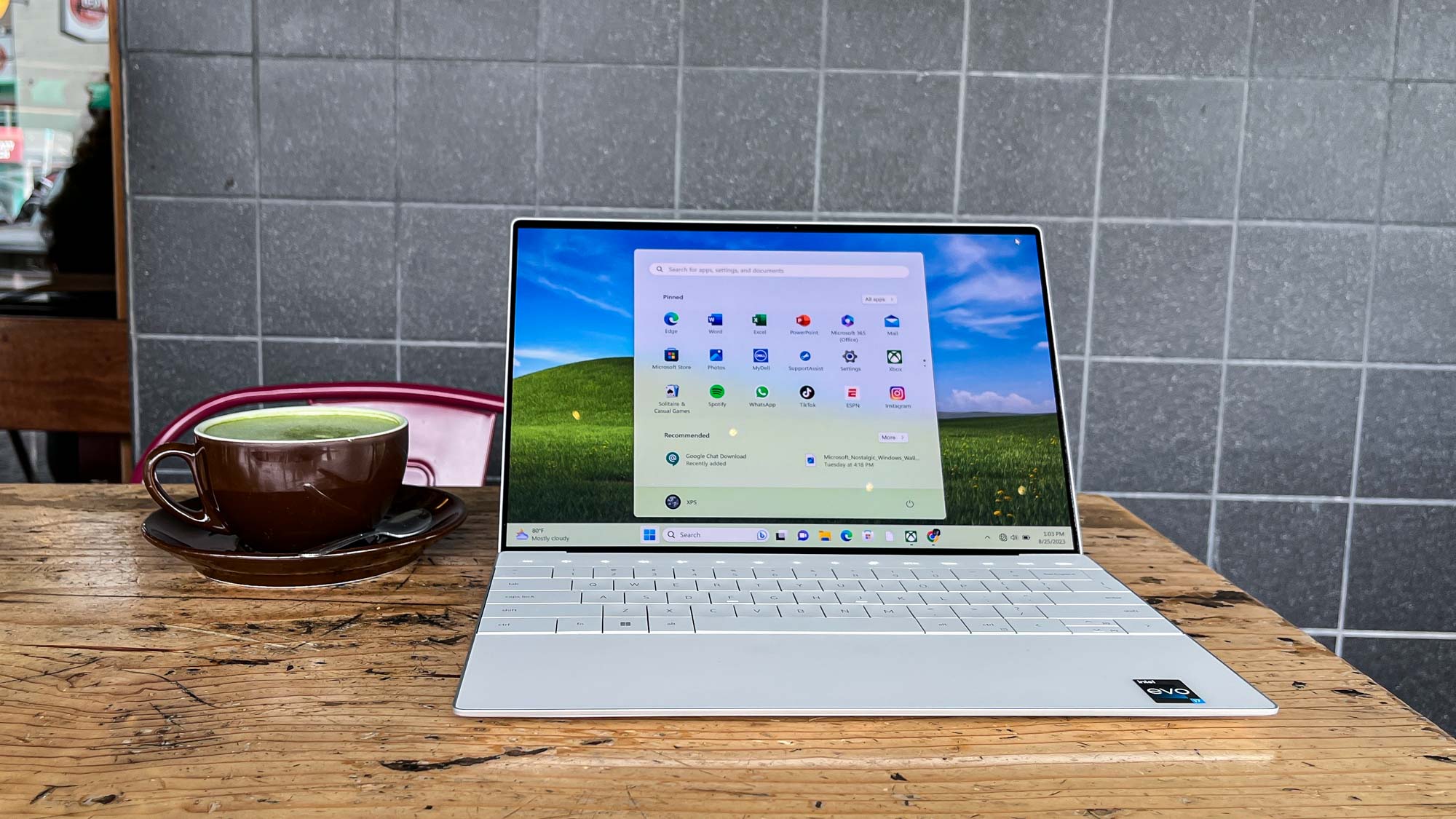
Before I get into the results, let me quickly note that the XPS 13 Plus comes with a complex web of power and heat management settings that you can use to try and optimize performance, battery life and heat for different scenarios. It's basically a more robust and complicated version of the Windows 11 Power & Battery settings, and you can access it all from the MyDell app that comes pre-installed on the XPS 13 Plus.
I only mention it because one of the thermal management modes you can use is called Ultra Performance, and since it could theoretically impact performance we made sure to run our tests at least twice on the XPS 13 Plus (2023), once with Ultra Performance enabled and once with the default Optimized power plan it comes with out of the box.
The laptop typically performed better in Ultra Performance mode, but not always, so I've gone through both sets of results and picked the best from each to cite in the charts of this review. My thinking is that if you buy an XPS 13 Plus (2023) yourself you'll have all the time in the world to play with the power settings and fine-tune its performance, so you should be able to achieve the results listed here in one or more of its power modes. I've also included both sets of results in the text, so you can get a sense of how much (and how little) difference Ultra Performance mode has on actual performance.
Our testing reveals this year's XPS 13 Plus has barely improved upon its problematic predecessor—and in some cases, it's actually slightly worse."
In terms of raw CPU performance, our XPS 13 Plus (2023) review unit scored 9,938/9,729 (Optimized/Ultra Performance) on the Geekbench 5 multi-core CPU test. That's a decent score that puts our XPS 13 Plus ahead of competitors like the Asus Zenbook 13 S OLED (7,482) and the Dell XPS 13 we tested last year (6,489), but it can't match other similarly-priced 13-inch ultraportables.
In fact, by our testing this year's XPS 13 Plus is actually slightly less capable than last year's model. I say that because when we ran last year's Dell XPS 13 Plus (2022) through Geekbench it earned a score of 11,217 in the multi-core CPU benchmark, which is slightly better than our new Dell XPS 13 Plus (2023) review unit managed.
That's a surprising step backward in terms of performance, though the disparity is so slim that I expect this shortcoming would be hard to notice even if you were using the two laptops side-by-side. That's why we do our own performance testing, and this surprising result suggests this year's XPS 13 Plus might be less capable of handling multi-core workflows than its predecessor.
And as you'll see when we get to talking about battery life, this isn't the only area in which the XPS 13 Plus (2023) falls short of its predecessor.
| Row 0 - Cell 0 | Geekbench 5 multi-core CPU | 25GB file copy speed test | Handbrake video editing time |
| Dell XPS 13 Plus (2023) | 9,938 | 1658.6 MBps | 6:31 |
| Asus Zenbook S 13 OLED | 7,482 | 1,257.3 MBps | 11:16 |
| Dell XPS 13 2022 | 6,489 | 808.2 MBps | 16:54 |
| Dell XPS 13 Plus 2022 | 11,217 | 1,266.6 MBps | 6:49 |
| Framework Laptop 13 (2023) | 11,317 | 1,697 MBps | 5:49 |
| Lenovo Yoga 9i Gen 8 | 9,954 | 1,669 MBps | 9:45 |
| Acer Swift 5 | 9,859 | 1,673 MBps | 7:35 |
| Acer Spin 5 | 10,040 | 1,395 MBps | 6:39 |
| Samsung Galaxy Book 3 Pro 360 | 8,250 | 1,173 MBps | 7:59 |
While I'm disappointed by the raw performance of this laptop's CPU, the SSD and 16GB of LPDDR5 RAM help it feel plenty speedy when multitasking or moving files around.
That experience is backed up by the results of our video editing and drive speed tests. When tasked with duplicating 25GB of multimedia files the SSD in our XPS 13 Plus (2023) achieved a peak file transfer speed of 1,658.6 MBps (megabytes per second). That's pretty quick, and as you can see from the chart above it's as fast or faster than many competing ultraportables, as well as its predecessor.

The XPS 13 Plus (2023) proved just as competent in our video test, which times how long it takes the laptop to transcode a 4K video down to 1080p via Handbrake. Right out of the box our XPS 13 Plus (2023) review unit did it in 8 minutes and 14 seconds, but in Ultra Performance mode it took only 6 minutes 31 seconds, which is just slightly faster than the 6 minutes and 49 seconds it took last year's XPS 13 Plus (2022) to complete the same task in Ultra mode.
That's not amazing but it's pretty good for an ultraportable, handily outperforming other 13-inchers like the Asus Zenbook 13 S OLED and Dell XPS 13 (2022) in the same test. It's even faster than Apple's MacBook Air M2, which took 7 minutes and 51 seconds to complete the same task. So while it can't match the raw power of a machine like the 14-inch MacBook Pro 2023 (which took just over 4 minutes to complete the same test), the XPS 13 Plus (2023) is pretty good for basic video editing.
| Row 0 - Cell 0 | Sid Meier's Civ VI @ 1080p |
| Dell XPS 13 Plus (2023) | 27.7 FPS |
| Asus Zenbook S 13 OLED | 23 FPS |
| Dell XPS 13 2022 | 13.8 FPS |
| Dell XPS 13 Plus (2022) | 33 FPS |
| Framework Laptop 13 (2023) | 27 FPS |
| Lenovo Yoga 9i Gen 8 | 25 FPS |
| Acer Swift 5 | 25 FPS |
| Acer Spin 5 | 28 FPS |
| Samsung Galaxy Book 3 Pro 360 | 33 FPS |
We also run every laptop we test through the Sid Meier's Civilization VI: Gathering Storm graphical benchmark so we can compare how well they run games. While Civ VI is far from a new game, it's great for testing laptops because it runs on a wide variety of hardware.
And while it's certainly playable on our XPS 13 Plus (2023) review unit, the laptop only managed to run it at about 23.3 frames per second, or as fast as 27.7 FPS in Ultra Performance mode. That's technically playable but not great, and it's once again worse performance than its predecessor (the 2022 XPS 13 Plus managed 33 FPS in Ultra Performance mode) and even the modest Acer Spin 5.

So while the XPS 13 Plus (2023) is plenty speedy enough for web browsing, work and some light gaming, don't expect to do much more with it. In my day-to-day use I have no complaints about the performance, but our testing reveals this year's XPS 13 Plus has barely improved upon its problematic predecessor—and in some cases, it's actually slightly worse.
Dell XPS 13 Plus (2023) review: Keyboard and touchpad
- Keyboard and touchpad are usable but annoying
- Capacitive touch keys are uncomfortable and unreliable
I deeply dislike the keyboard on the Dell XPS 13 Plus.
It certainly looks attractive, as Dell has spread it from edge to edge with a "zero lattice" design that leaves minimal gaps between keys. I found the layout a little cramped for my comfort, but then I'm 6'4" with sausage fingers so take my opinions on 13-inch laptops with an appropriately-sized grain of salt. The keys themselves feel nice to type on, and despite the minimal travel there's a satisfying bounce when you depress a key that feels good under my fingers. There's a fingerprint reader built into the power button too, which is always nice to have.
But despite all that, I was constantly frustrated by the keyboard while conducting this review. For example, that fingerprint reader is on a rather small power button that's unmarked and wedged beside the Backspace key in the upper-right corner of the keyboard.
It certainly blends in with the laptop's minimalist aesthetic, but it's far too easy to accidentally hit it while typing. The Backspace key and I are old friends at this point in my career, and having to constantly be careful when hitting it made typing up this review a real pain.
And as cool as the capacitive touch keys look, they're no fun to use. By default they show icons for a series of useful media controls (like increase/decrease volume, brightness, enable/disable mic, etc) and you can hit the Function key at the bottom of the keyboard to swap them over to the standard F1-F12 keys.
I shouldn't have to relearn how to type in order to comfortably use this laptop.
But hitting the keys turns out to be the problem. During my time with this laptop I was frustrated multiple times by having to hit a capacitive touch key two, three, four or even five times before it would register my press. This is frustrating in any context, and even more so when you're frantically trying to increase the volume or hit the mute button during a conference call.
And every time I hit a capacitive touch key the impact of my finger hitting the hard, unyielding surface hurt a little bit. Not much, and I could probably learn to strike the keys even softer if I could figure out the trick to getting them to consistently register my presses, but I shouldn't have to relearn how to type in order to comfortably use this laptop.
The touchpad beneath the keys is perfectly usable, if a bit too easy to touch by accident. Maybe I'm just inept, but I'm used to feeling the edge of a touchpad with my fingers, hands and wrists in order to know without looking when I'm in danger of activating it by accident. I can't do that on the XPS 13 Plus because there's no edge to see or feel, so more than once I accidentally sent the mouse pointer zooming around the screen while typing out this review.
Dell XPS 13 Plus (2023) review: Audio
- Sound quality is decent and stays consistent even at max volume
- No bass worth mentioning
The speakers built into our Dell XPS 13 Plus (2023) review unit did a better job than I expected of delivering clear, resonant sound. I had more fun than I expected streaming my favorite Spotify playlists on this laptop, and the sound quality stays decent even when you crank the volume up to max.
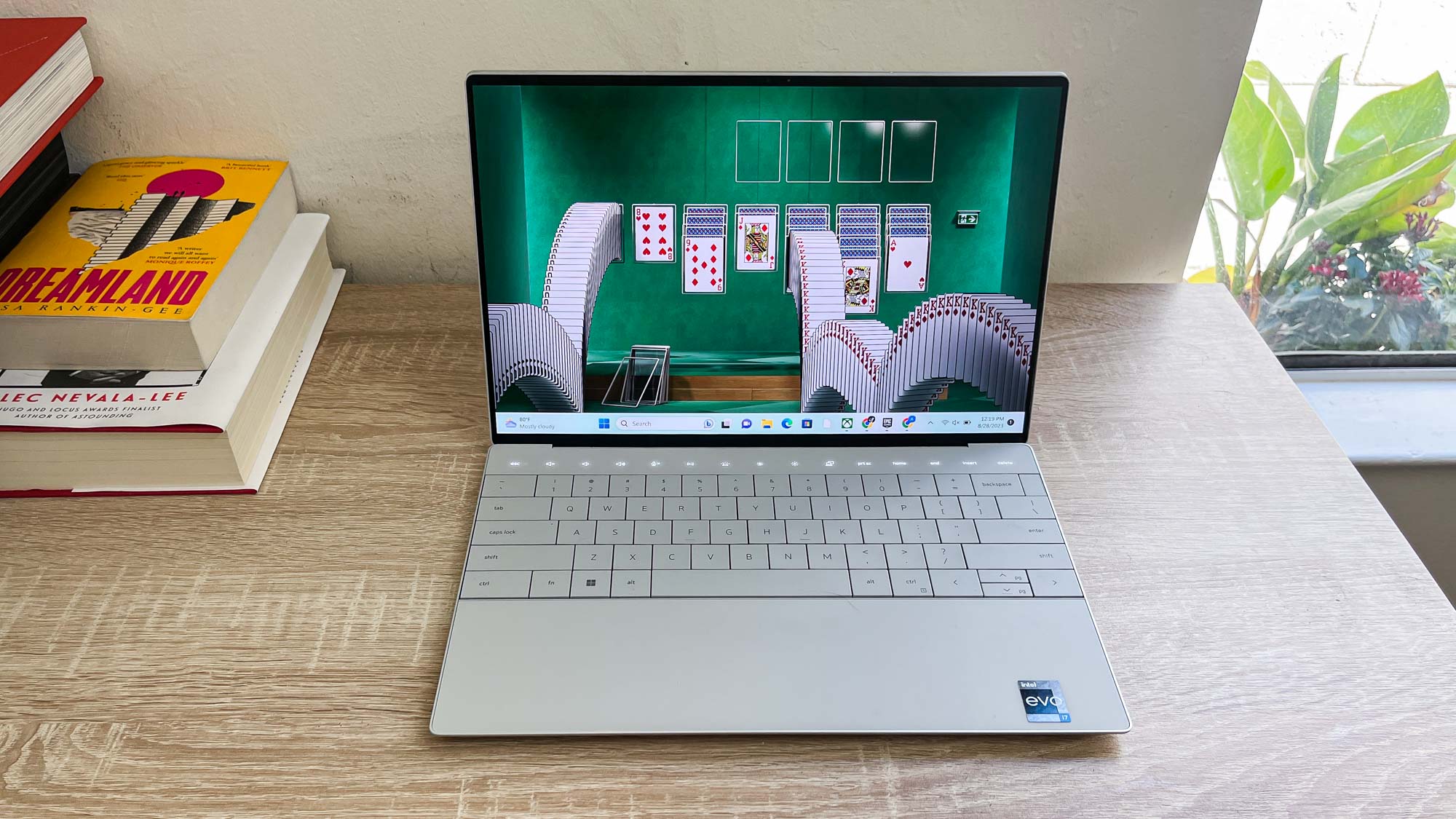
But while the speakers on our XPS 13 Plus do get loud and tracks from the likes of Kamaiyah, The Mountain Goats and Muddy Waters sounded good coming out of this little laptop, there's no bass to speak of. You can feel the laptop vibrate slightly in your hands if you crank the volume all the way up, but don't expect bass to have much punch coming out of this little machine.
Dell XPS 13 Plus (2023) review: Webcam
- 720p webcam delivers better image quality than expected
- Still a bit too grainy and low-res to feel premium
The 720p webcam built into the center of the top bezel on our XPS 13 Plus (2023) review unit is good enough for videoconferencing, but you won't be amazed by how you look.
As you can see from the test shot embedded above, the camera does a pretty good job of capturing detail and accurately representing color and shadow. Frankly, I was a little surprised how good this webcam can make you look in the right lighting. However, even under the best conditions the image quality looks grainy, an effect that's only heightened when you move around during a video call.
Dell XPS 13 Plus (2023) review: Software
- Blessedly little bloatware
- The MyDell app is clutch for managing power and performance settings
The Dell XPS 13 Plus (2023) doesn't come bogged down by too much bloatware, which I appreciate. Of the apps that do come pre-installed, the one you want to pay attention to is definitely the MyDell app.
The MyDell app gives you significant control over system settings like the built-in noise cancelling tech, the presence detection tools (which use the webcam to do things like lock the laptop when it detects you walking away) and Dell's power and performance settings.
The power and performance controls are especially important because that's where you can change things like the thermal management profile, which offers more options and more control than Windows 11's power settings menu. The thermal management controls are where you'll do things like enable UItra Performance mode or flip on the "intelligent battery extender" which dynamically adjusts system settings to maximize battery life.
I don't like having to dig into a separate vendor app to fine-tune my PC's basic power and performance settings, but I am at least grateful Dell put all these useful features and controls into the one MyDell app instead of sprinkling them through 2-3 different apps, as some laptop vendors are wont to do.
Dell XPS 13 Plus (2023) review: Battery life & heat
- Under 7 hours of tested battery life is a big disappointment
- You'll likely get better from a model without a 4K OLED touchscreen
Our Dell XPS 13 Plus (2023) review unit didn't perform well in our battery test, which tasks the laptop with surfing the web via Wi-Fi (with the screen brightness set to 150 nits) until it runs out of juice.
The laptop lasted an average of 6 hours and 20 minutes in the test, which is really disappointing and worse than any premium ultraportable laptop we've tested in years. It's even worse than the Dell XPS 13 Plus we tested last year (7:34), which was also a disappointment in the battery life department.
Part of this may be due to the fact that every XPS 13 Plus unit we've tested has sported a 4K OLED display, which demands more power than the standard-issue 1200p LCD touchscreen. Dell doesn't hide this either, as the company advertises you should expect up to 7 hours of battery life while streaming Netflix on an XPS 13 Plus equipped with a 4K or OLED display vs. up to 9 hours on one with a standard 1200p LCD screen.
| Row 0 - Cell 0 | Time (hours:minutes) |
| Dell XPS 13 Plus (2023) | 6:20 |
| MacBook Air M2 | 14:33 |
| Dell XPS 13 Plus (2022) | 7:34 |
| Dell XPS 13 (2022) | 13:11 |
| Framework Laptop 13 | 11:38 |
| Dell XPS 15 OLED (2023) | 8:58 |
| Samsung Galaxy Book 3 Ultra | 10:01 |
| MacBook Pro 16-inch 2023 | 16:37 |
So there's no smoking gun here — you just can't count on a solid 8 hours of battery life when using the XPS 13 Plus with its 4K OLED display, and Dell knows it.
Still, it's disappointing. If you can't count on this laptop to last you through 8+ hours of work you'll have to think about whether to lug the power adapter with you when you leave the house, as well as where and when you can get reliable access to an outlet.
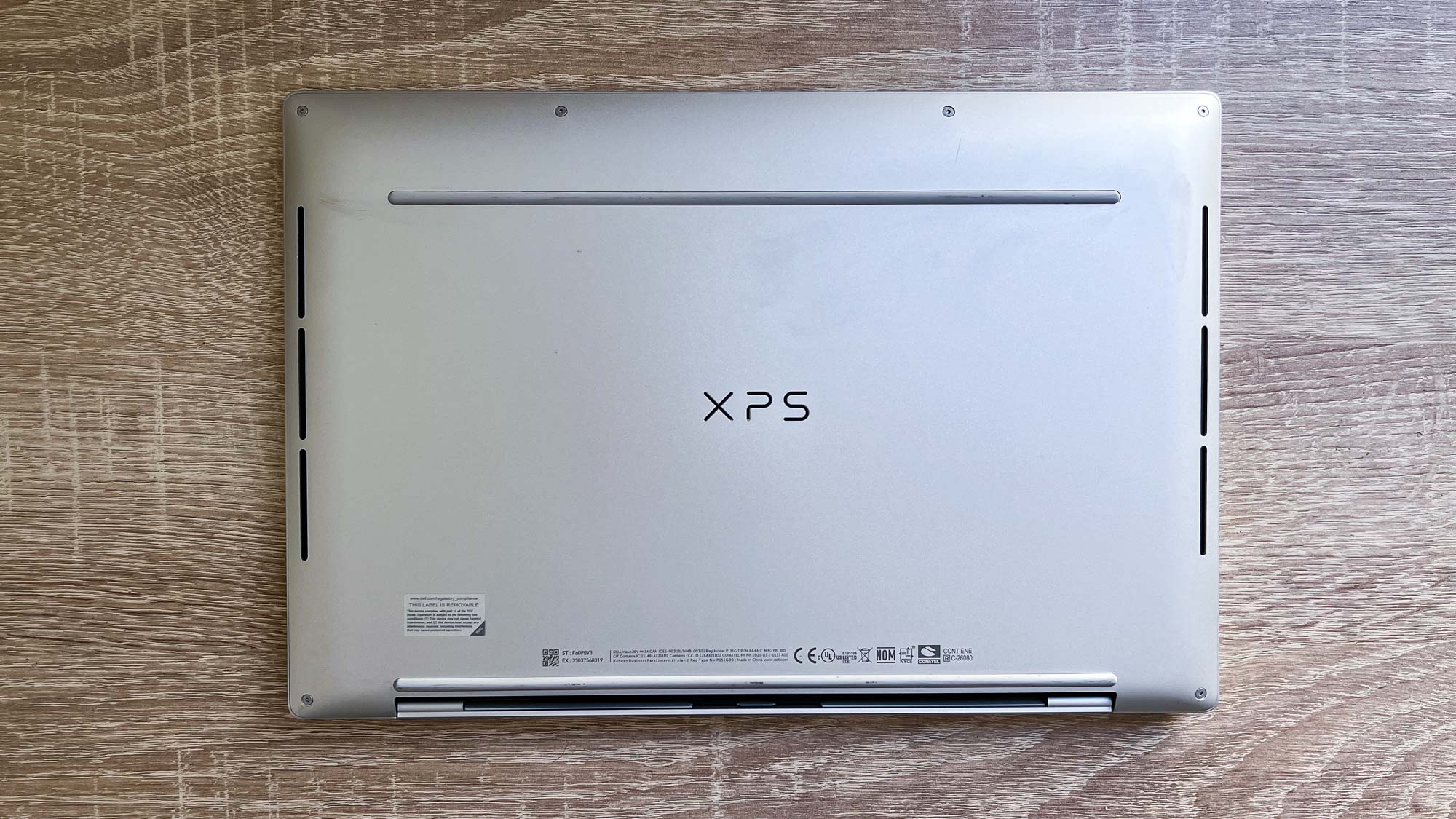
Plus, this laptop can become something of a lap-scorcher if you're not careful. I never noticed it getting too hot during normal use, but if I started playing a game our XPS 13 Plus (2023) review unit instantly started to heat up.
When we subjected it to our heat test, which involves playing an HD video for 15 minutes and then scanning the laptop with a heat gun, we found it got as hot as 105.8 degrees on the underside. That's darn right uncomfortable if you've got it in your lap, so you may want to use this laptop on a desk or table when tackling intense tasks.
Dell XPS 13 Plus (2023) review: Verdict
I really want to like the Dell XPS 13 Plus, but I don't.
The 2023 model looks great and feels sturdy, yet it's so svelte and easy to carry I was able to stash it in the glove compartment of my car without having to move anything. The 3.5K OLED display upgrade really amps up the premium feel of this device, and I think it's worth paying for because it makes everything you do on it look better.
But that's about all the nice things I can say about this laptop. It's powerful enough for light work and gaming but not much else, and the poor battery life takes some of the shine off its portability because you'll often want to lug the charger with you, just in case.
And while the keyboard feels good enough under my fingers, the cramped layout and unsatisfying capacitive touch keys made typing on this laptop a pain. Factor in the underwhelming performance and outdated 720p webcam and this ultraportable starts to lose a lot of its premium feel. As much as I wanted to like it, I don't think I'd ever buy an XPS 13 Plus for myself.
Still, if you want a small, lightweight OLED-equipped Windows laptop the Dell XPS 13 Plus (2023) is a solid choice that's powerful enough for office work and looks good on a desk. But if portability and OLED displays are what you prize I'd also recommend the Asus Zenbook S 13 OLED since it's cheaper, thinner and lighter than the XPS 13 Plus (2023) with better battery life, at the expense of worse performance and a dimmer OLED.

Alex Wawro is a lifelong tech and games enthusiast with more than a decade of experience covering both for outlets like Game Developer, Black Hat, and PC World magazine. A lifelong PC builder, he currently serves as a senior editor at Tom's Guide covering all things computing, from laptops and desktops to keyboards and mice.
